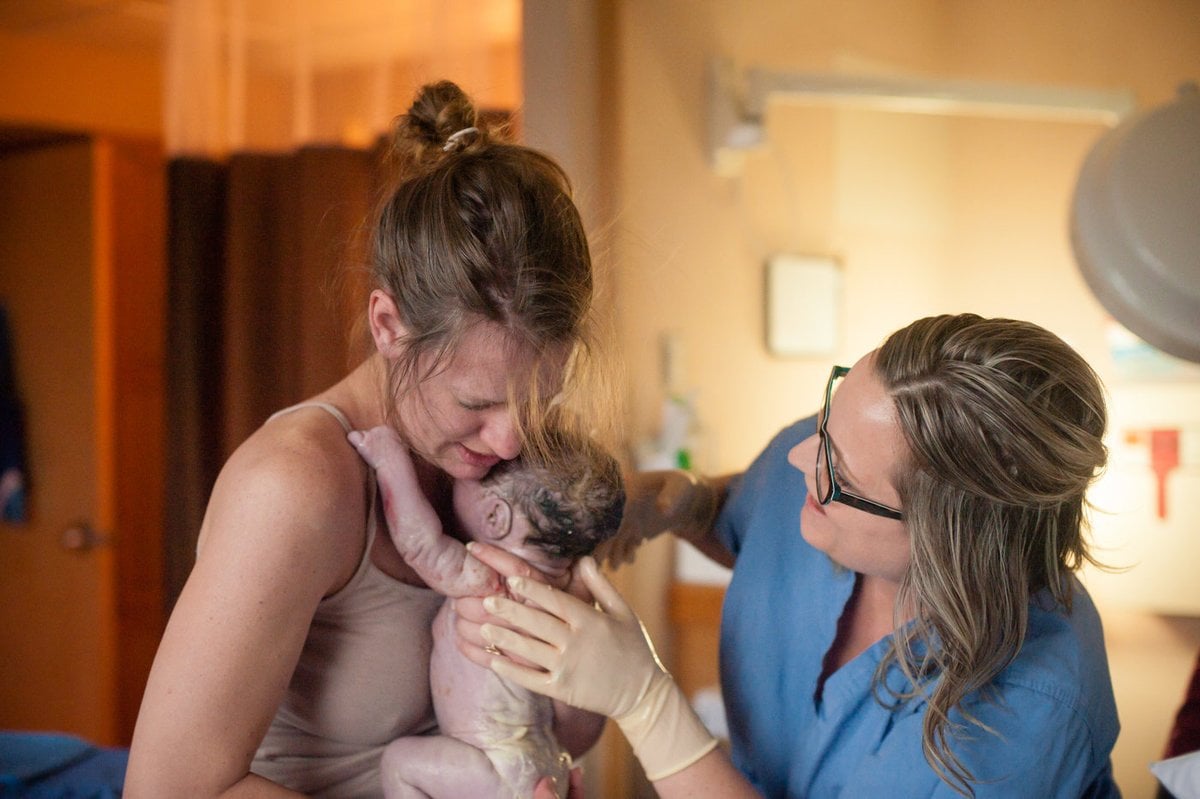Hospitals, in many ways, are the bookends of life.
Over 98 percent of Americans take their first breath of life within the walls of a hospital. But these very same hospitals are also the same places where, historically, 60 percent of the U.S. population goes to die.
Now, with hospitals considered ground zero in the nation’s fight against the deadly coronavirus, this striking contrast of life and death—all within the confines of the same building—is giving many expecting families a reason to rethink their birthing options. Although its still early days, the unease that expecting parents are feeling about delivering their babies in a traditional setting is driving interest in so-called “alternative birthing solutions,” a wide-encompassing portfolio of service options that includes birthing centers, midwives, doulas, home births, a panoply of other less common childbirth services and much more.
In 2017, the last year U.S. national government health data was publicly made available, an estimated 3.5 million American women chose to deliver their babies in a traditional hospital setting. Now, in 2020, as the country is swept up in a fight against a global viral pandemic, parents’ fears of willfully coming in close contact with patients infected by COVID-19 is marking a watershed moment in the childbirth business; many experts in the field believe ‘alternative birthing’ could quickly become one of the fastest growing sectors within health care services as the country continues to grapple with COVID-19.

That pregnant mothers—especially for the vast majority whom have had normal gestations and are anticipating uncomplicated vaginal deliveries—would willingly decide to give birth in the same building where, perhaps just a floor below, dozens of patients infected with COVID-19 are on ventilators, struggling to stay alive, does make one wonder if a trek to the hospital to deliver a baby is still worth the risk.
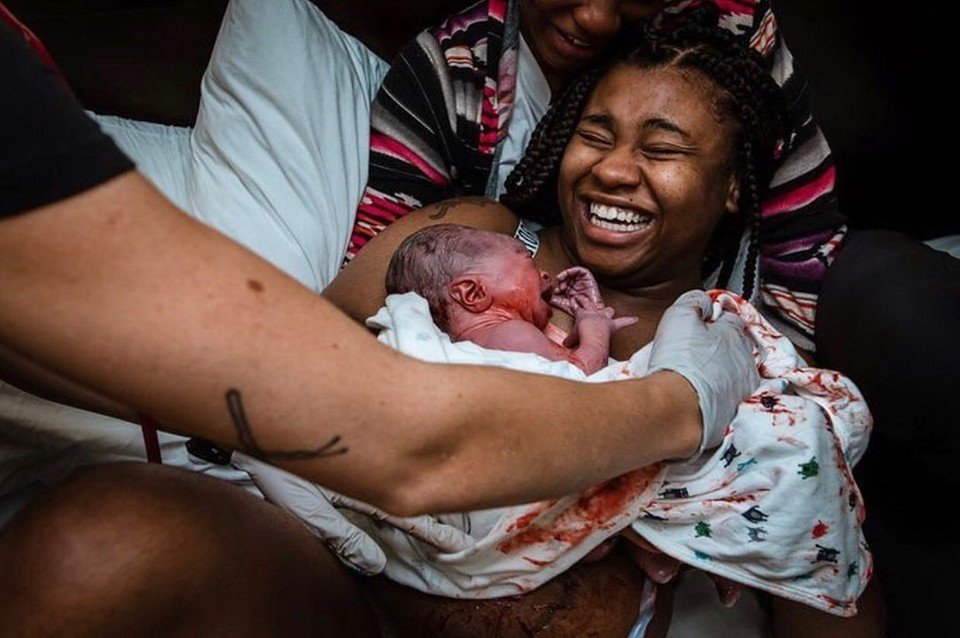
Hospital health security is a major driver in the growth of interest in out-of-hospital births. Despite being sequestered on their own floor or in separate annexes, hospital maternity wings are not immune to the impact of the coronavirus.
Many Americans were moved—and perhaps more than a bit frightened—by the widely publicized story of Angela Primachenko from Vancouver, Washington, who was infected by COVID-19 and ended up giving birth to her daughter while in a medically-induced coma.
https://twitter.com/CNN/status/1250516745502298117?s=20
While Primachenko’s experience is certainly not the norm, it did shine a very bright light on the issues surrounding childbirth and hospitals during this unique period of time.
Before Coronavirus: Alternative Birthing Options Were Already Emerging as a Trend
While still small as a percentage of overall births in the United States, the rate of out-of-hospital deliveries has been steadily growing since the mid-2000s. COVID-19 has put that trend into overdrive. Social media forums are replete with pregnant couples openly fretting about the risks of willfully putting mother and child at risk by entering a facility that is reeling from a new pandemic, which is still far from being fully understood. Moreover, many hospitals have put into place social distancing rules that do not allow anyone to accompany an expecting mother into the delivery room. These barriers, which keep family—even the father or life partner—from accompanying the birthing mother during the delivery, serve to make the current hospital birthing process as emotionally unappealing as it might be from a health and safety perspective.
As expecting parents begin to dip their toes into the waters of less common birth places, many will find that it is a largely disaggregated marketplace with a confusing array of options and services. Fortunately, there are a number of digital health startups that are bringing order to the chaos, leveraging the same tools that have brought rhyme and reason to other disorganized marketplaces.

“Society is starting to ask some pretty important questions: Why do we have so many maternal deaths in the U.S. compared to other developed countries? Why does our surgical birth rate keep growing year after year?”
Some of these digital health startups are taking a more ‘Yellow Pages’ approach, essentially indexing the different providers by type of service and geography, without editorializing. Others are going more toward the route of Airbnb—the company that upended the traditional lodging industry—by providing resources and tools that vet, rank and connect users with service providers, with the end-goal of meeting each particular clients’ needs by helping design a bespoke birthing experience. Firms such as Maven, Quilted Health and Mina Families are among the leading digital health players in the emerging yet still incipient alternative birthing solutions space.
Worth spoke to a number of leading experts in the medical and childbirth field who identified Minneapolis-based Mina Families as one of the companies best positioned to capture a significant share of the marketplace for alternative, or non-traditional, out-of-hospital birth solutions. We connected with company founders Kristen Womack, the chief executive officer and Terryn Lawrence, the chief operating officer, to get an inside look at this burgeoning slice of the health care sector amid COVID-19.
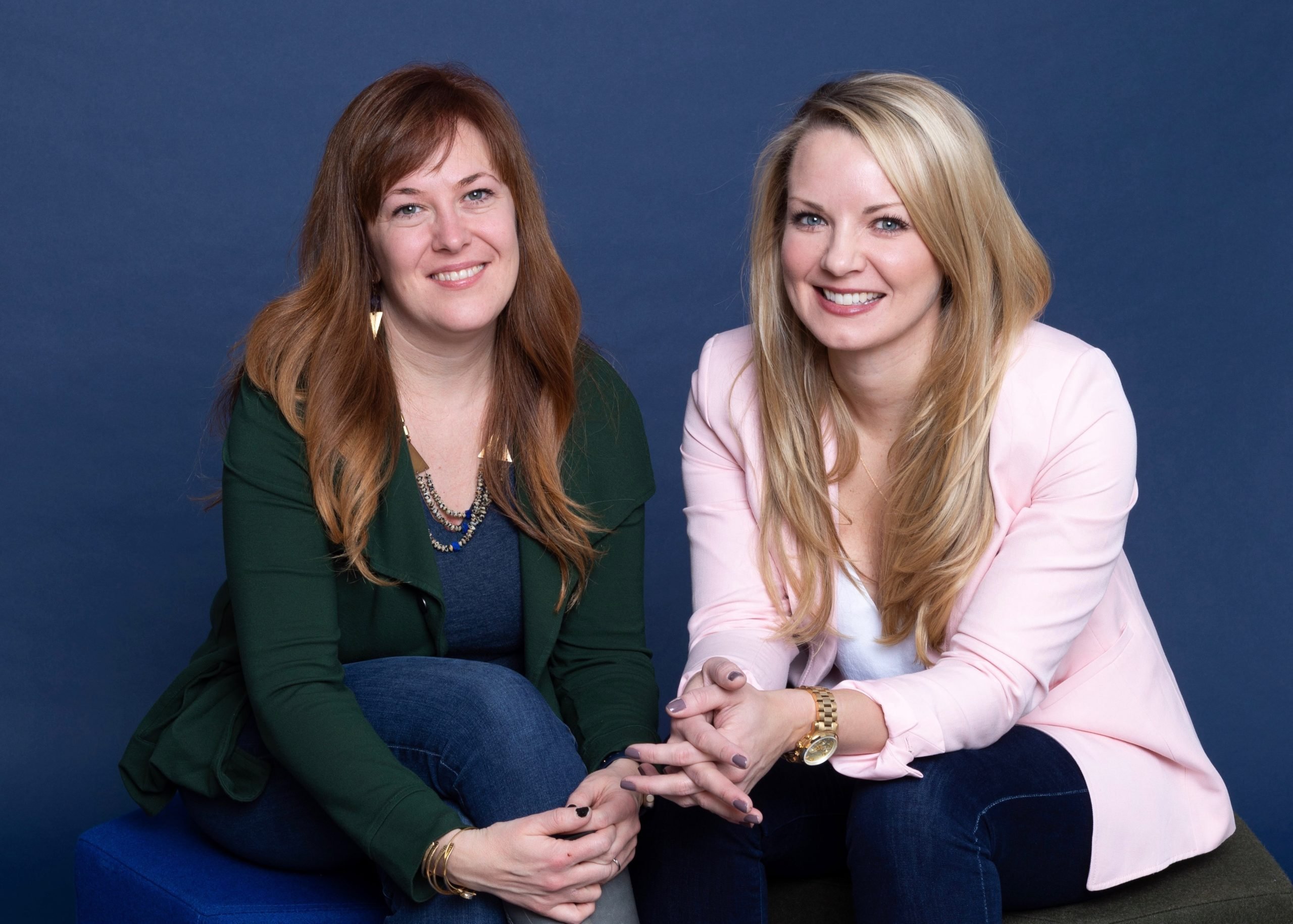
Q: First of all, how are you both doing?
Terryn Lawrence: We are both doing very well, thankfully. Our team is resilient, healthy and we’re fortunate to be able to work remotely with our families. I come from a family of physicians, so I hear stories from the frontlines—just about every day—of the epic battle that our health care workers are waging against the coronavirus. Our company is based in Minneapolis, but I am thankful that my family has been able to social distance on our family farm in rural Pennsylvania, especially since learning that I am now 13 weeks pregnant with our third child.
Mazel tov! That’s got to be exciting—and nerve-racking. Have you decided where you are going to have the baby?
TL: Thank you! No, my husband and I haven’t yet decided. With birthplace policies and the health care landscape changing rapidly, we’ll be making that decision closer to the arrival of our little one.
So, you’re not going to have the baby on the farm?
TL: Not unless he comes much earlier than expected!
It’s a scary time to be pregnant isn’t it?
TL: Yes, it is. Any pregnancy has some anxiety and worry, but those feelings are amplified now when so much feels out of my control, but I’ve already started to assemble my ideal birth and postpartum care team which provides a lot of comfort during this time.
Kristen, what was it that made you interested in starting Mina Families?
Kristen Womack: Like most women—we actually prefer the more inclusive term ‘birthing person’—I had my first baby in a hospital, but I felt that it could have been better. With my second birth, I felt a need for a more spiritual and connected birth experience and sought out a birth center where I didn’t feel coerced into non-evidence based medical procedures, like continuous monitoring, vaginal checks and IV fluids—all things that I found disruptive. I found a birth center and it was like night and day; it was healing and empowering; it had everything I wanted, including a much better postpartum [experience].
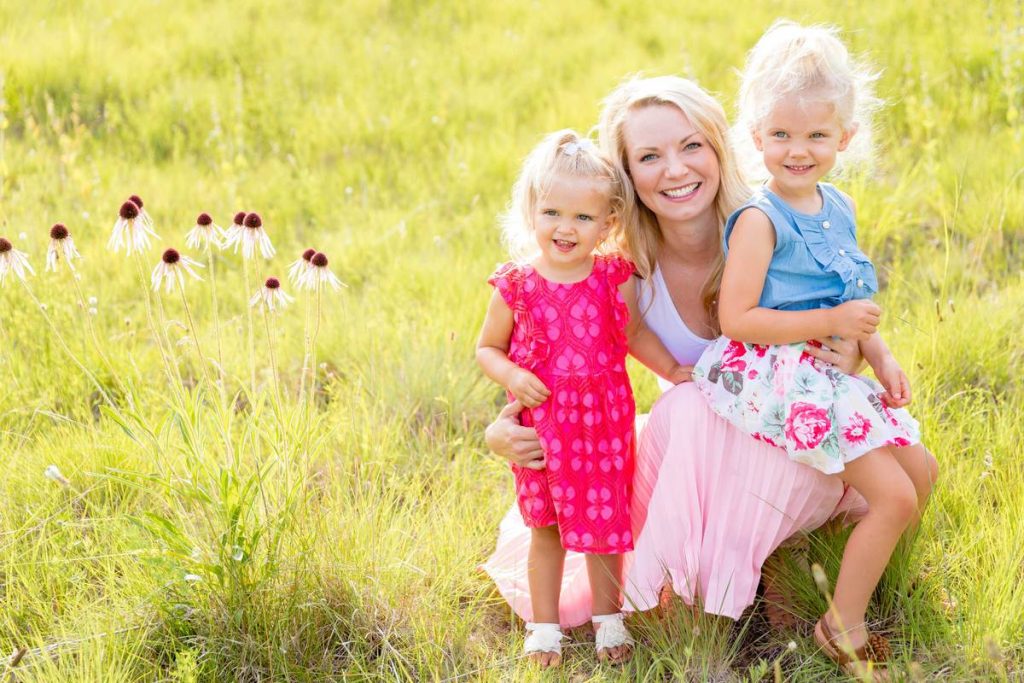
Before COVID-19, why do you think there was so much growing interest in out-of-hospital births?
KW: Society is starting to ask some pretty important questions: Why do we have so many maternal deaths in the U.S. compared to other developed countries? Why does our surgical birth rate keep growing year after year? And on a personal level, we’re asking another set of equally important questions: Why aren’t we better informed about the things that happen to us in birth and postpartum, and why are there so many prenatal appointments and only one postpartum visit? Can we trust the system? Many birthing people are starting to push back in a collective, “No, a healthy baby isn’t the only thing that matters,” which is language that coerces the birthing person to comply without asking questions.
What should families who are expecting know about their options? It seems there are a lot more services available now than in recent years.
TL: I think there’s a lot to be said for education and demystifying the misconceptions around birth. When I was pregnant with my oldest child, I thought there were only two paths: give birth at a hospital with an OB or give birth at home in my bathtub with a doula surrounded by candles. Turns out, that’s not the case.
Birth is not black and white—you can “pick your own adventure” and create the experience that’s right for you. Want a hospital birth? Cool. Want a water birth at a birth center? Equally cool. A midwife to catch your baby? Awesome. Postpartum doula? Heck yes. Want to encapsulate your placenta? It’s all up to you! There are many sound, reasonable choices—as long as they’re made with reliable information. Birthing people should feel safe and empowered while bringing their little ones into the world.
Sounds like there may be even too much information out there, complicating the decision-making process.
TL: When choosing where to give birth, I found it difficult to find side-by-side comparisons of my options and their associated outcomes. I’m ashamed to say it, but I spent more time researching my last vacuum cleaner than I did my birth location. Why? Because data was available and easy to find. That’s one of the reasons that I’m so excited about building Mina. We want to be the place where families can research their options and find the right care team in a shoppable Airbnb-like experience.
How is COVID-19 impacting the out-of-hospital birth sector?
TL: It’s a scary time to be pregnant, not only due to risk of exposure to the virus but also due to the restrictions on birth support that impact spouses, doulas, etc. Right now, there is an overwhelming interest in exploring birth centers—we’re hearing inquiries are up 10 times over their normal volume now versus a year ago, pre-COVID-19.
Is that surging demand putting a lot of pressure on birth centers?
TL: This is placing a lot of strain on birth centers because not everyone is a good candidate for this type of option.
Are there some people who absolutely should not consider out-of-hospital births?
TL: There are several reasons a person would need medical support: placenta previa, preeclampsia and preterm labor before 37 weeks and a host of other conditions. Just like anything in life, sometimes you need medical intervention. That’s why we have hospitals. We’re not anti-hospital, we just believe that for many families with uncomplicated pregnancies, there are so many other options out there that they should be aware of.
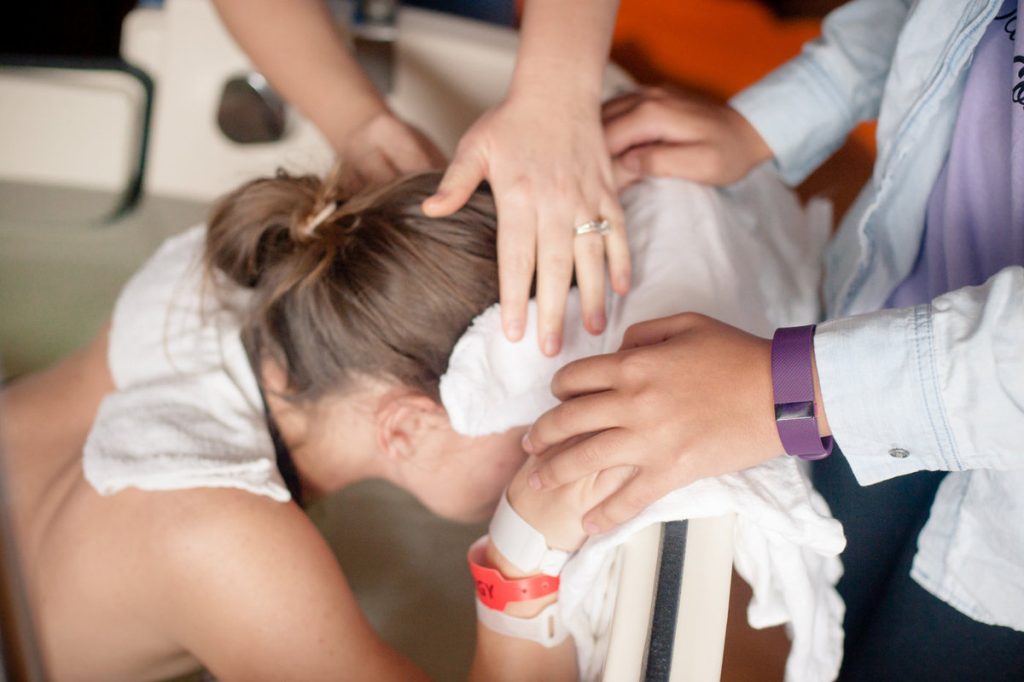
You two don’t like the term ‘deliver’ as it relates to births. Why?
KW: At Mina, we intentionally use active language that centers the birthing person—the individual who gives birth—instead of saying their baby was “delivered,” which is physician-focused and passive voice. Same with saying “caesarean birth” or “surgical birth” instead of C-section. This rightfully gives people their power back and sees them as capable. My background is in linguistics and language as power. To change culture, we need to change language.
A century ago, most children were delivered at home. How did we come to see birth as a medical event, necessitating a hospital stay?
KW: Until the early 20th century, the majority of U.S. births occurred at home, attended by midwives, family and friends. But by the 1940s, births had moved largely to hospitals, as OBs pushed out traditional care, and labor and delivery became a significant revenue stream for hospitals. Over the years, the entire birthing process became increasingly medically oriented. Now, years later, we see that cesarean births have increased by 500 percent since the early 1970s. Some people require a surgical birth, but there is no reasonable explanation how now, rather suddenly, a third of birthing people require a surgical birth.
How is the insurance industry reacting to this emerging trend of birthing centers and at-home births?
TL: Many birth centers work with insurance for reimbursement but receiving coverage for a home birth is much more difficult. That said, even without insurance, it’s often more cost effective to have a baby at home or at a birthing center than at a hospital. Obviously, for many high net worth families, insurance is less of an issue and its more about setting up a situation that feels right and meets the family’s expectations.
The situation with COVID-19 will likely change the landscape of insurance coverage for out-of-hospital options. There is currently a petition on Change.org calling for insurance companies to cover home births now and in perpetuity. The petition points out that insurance companies would save money, keep hospital capacity open for those who really need it and lessen the exposure of COVID-19 to parents and infants. It has already been signed by over tens of thousands of people.
What about surrogacy?
KW: Surrogacy and pre-arranged adoptions create a more complex decision making dynamic because a birthing person might be contractually obligated to give birth in a hospital. With the pandemic, hospitals are implementing a one-person policy that leaves only one parent there at the birth—likely one of the most important events of their life. We understand the need for social distancing to slow the spread of COVID-19, but we also believe that these sweeping hospital policies aren’t taking into account the psychological well-being of the baby or birthing person.
How is technology impacting the alternative birth sector?
KW: People are better able to find and research care providers through search engines and emerging applications. We are not alone in this space, which we see as a good sign that it is a robust market space. At Mina, we are approaching this problem with an API-first strategy, using technology to serve up the right data and actions in the right context for consumers. We are platform-agnostic, so we believe that Mina should be able to connect with its users via an app, search engine, through social media, SMS or any other number of methods.
What types of services can one find on Mina Families?
TL: Minas’ services range from fertility through postpartum care. We have over 40 different service and specialization categories including doulas, lactation consultants, midwives, body workers, nutritionists, chiropractors, acupuncturists, babywearing experts, sleep consultants and much more. Our hope is that parents can prepare and find the right care early on to avoid acute challenges once they’re “in the thick of things.”
What is the Mina Families business model?
TL: Mina’s primary clients are the individual birth workers (doulas, lactations consultants, midwives, etc.) who pay a subscription fee to be on our platform. They receive a listing, marketing resources, messaging, business coaching, tools, social media promotion and a strong community. Most of the birth workers with whom we work do not have a background in the marketing and sales component of running a business. We reduce that burden to allow them to do more of what they do best—care for families.
Parents can browse and discover birth places and care providers at no cost. We help them find the right care that fits their situation, values and preferences. If they book with a provider through the platform, they pay a nominal marketplace fee. We’ve also tested bespoke, personalized matching service through a beta “Get Help Now” feature. Parents in need of a service can work with one of our team members to be matched with care across the country, even if the provider is not yet on our platform.
We’re currently in partnership discussions with several large employers to bring these resources to their employee populations.
How is the company funded?
TL: Mina was self-funded for the first three years as we learned and tested the market. In January of this year, we raised a seed round from a group of influential angel investors from across the country—most with a particularly personal, as opposed to professional, connection to our business. Several of our investors like to refer to themselves as “recovering oil and gas investors,” including one who had recently worked with a doula when he and his wife welcomed their first child. He experienced the benefits of personalized care and quickly understood our mission to help more families find that kind of support. Prior to COVID-19, we were planning on raising another round of financing toward the end of this year, but we’ll have to wait and see how things work themselves out. It’s a quickly growing market, and we are in a very good spot to play a major role in helping shape it over the next few years.
Where do you see the alternative birthing industry heading in the next five years?
KW: The entire birthing industry is poised for significant change. In the next few years, we believe that there will be marked growth in hospital-adjacent freestanding birth centers. Hospitals are catching on to this trend—births account for nearly a quarter of a typical hospital’s revenue. That’s why when you Google “doula,” you often see an ad for a hospital. And if you look closely, some hospitals are rebranding themselves as birth centers. This resonates with families; they often say, “I’m birthing at XYZ Birth Center,” and it’s actually a hospital. I think that this entire niche of the health care sector will look quite different than it does today, and we’re excited to be a part of that.

